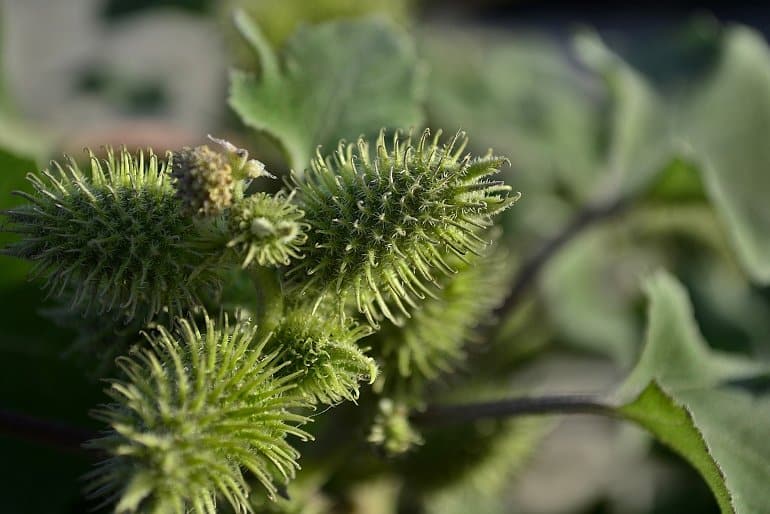Summary: The spikey fruits of the invasive weed Cocklebur have antioxidant and anti-inflammatory properties that can promote the production of collagen in the skin.
Source: ASBMB
The fruit of the cocklebur plant, which grows worldwide and is often considered a noxious weed, has antioxidant and anti-inflammatory components that could make it useful as a skin protectant, according to new research.
Researchers found that compounds in the species’ spiky fruits reduced damage from UVB exposure and sped wound healing in laboratory tests using cells and tissues. The cocklebur extracts also appear to influence the production of collagen, a protein that gives skin its elasticity and prevents wrinkles.
“We found that cocklebur fruit has the potential to protect the skin and help enhance production of collagen,” said Eunsu Song, a doctoral candidate at Myongji University in South Korea, who conducted the research with Myongji University Professsor Jinah Hwang.
“In this regard, it could be an attractive ingredient for creams or other cosmetic forms. It will likely show a synergistic effect if it is mixed with other effective compounds, such as hyaluronic acid or retinoic acid, against aging.”
Song will present the new research at Discover BMB, the annual meeting of the American Society for Biochemistry and Molecular Biology, March 25–28 in Seattle.
Cocklebur is a plant native to Southern Europe, Central Asia and China that has spread worldwide, often found in moist or sandy areas such as roadside ditches and riverbanks.
Its distinctive fruits, covered in stiff husks and burrs, have been used for centuries in traditional medicines for headache, stuffy nose, disorders of skin pigmentation, tuberculosis-related illness and rheumatoid arthritis. In recent years scientists have explored its potential use in treatments for rheumatoid arthritis and cancer.
The new study is the first to examine the fruit’s properties as a wound-healing agent and skin protectant. Researchers first studied the molecular properties of cocklebur fruit extracts and isolated particular compounds that could contribute to anti-oxidant and anti-inflammatory effects.
They then used cell cultures and a 3D tissue model with properties similar to human skin to study how these compounds affect collagen production, wound healing and damage from UVB radiation.
The results showed that the cocklebur fruit extracts encouraged collagen production, sped wound healing and exerted a protective effect against UVB radiation. Comparing the bioactivity of cocklebur fruits grown in different places, the researchers found that fruits grown in South Korea had slightly higher anti-oxidant and anti-inflammatory properties and greater wound-healing activity than those grown in China.

Researchers found that compounds in the species’ spiky fruits reduced damage from UVB exposure and sped wound healing in laboratory tests using cells and tissues. Image is in the public domain
Researchers cautioned that high doses of cocklebur fruit extract can be harmful and further research is needed to determine how to use it safely in cosmetic or pharmaceutical applications.
“In its burrs, cocklebur fruit also has a toxic constituent, carboxyatractyloside, which can damage the liver,” said Song.
“Cocklebur showed a potential as a cosmetic agent by increasing collagen synthesis; however, it showed negative results with higher concentrations. Therefore, finding the proper concentration seems very important and would be key to commercializing cocklebur fruit extracts in cosmetics.”
Moving forward, the researchers plan to further study the biological mechanisms involved and conduct experiments in animal alternatives to explore ways to safely adapt cocklebur fruit extracts for use in cosmetic products.
Funding: This research was supported by the National Research Foundation of Korea (NRF) grant funded by the Korea government (MIST) (No. NRF-2021R1A2C10 12890).
About this anti-aging research news
Author: Anne Johnson
Source: ASBMB
Contact: Anne Johnson – ASBMB
Image: The image is in the public domain
Original Research: The findings will be presented at Discover BMB







